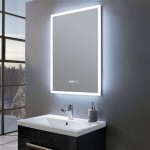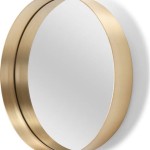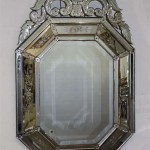How to Mirror iPhone to Mac via Bluetooth
Mirroring an iPhone screen to a Mac provides a larger display for various activities, from presentations and demonstrations to enjoying media content. While several methods exist for screen mirroring, Bluetooth, primarily designed for short-range data transfer, is not typically used for mirroring an iPhone to a Mac. AirPlay, a proprietary wireless streaming protocol developed by Apple, is the recommended method for mirroring Apple devices. This article clarifies the limitations of Bluetooth for screen mirroring and details how to utilize AirPlay for this purpose.
Understanding Bluetooth's Limitations for Screen Mirroring
Bluetooth technology, while versatile for connecting peripherals like keyboards, mice, and audio devices, lacks the bandwidth required for real-time video streaming necessary for screen mirroring. The data transfer rate of Bluetooth is significantly lower than that of AirPlay, resulting in lag and poor image quality, making it unsuitable for mirroring an iPhone screen to a Mac. While some Bluetooth profiles support limited audio and file transfer, they are not designed to handle the continuous high-bandwidth stream required for screen mirroring.
AirPlay: The Recommended Method for iPhone to Mac Mirroring
AirPlay is Apple's built-in technology specifically designed for wirelessly streaming audio, video, and screen content between Apple devices. It leverages the local Wi-Fi network for high-bandwidth transmission, enabling smooth, lag-free mirroring of an iPhone's display to a Mac. AirPlay also supports mirroring with audio, allowing users to enjoy the complete audio-visual experience on the larger Mac screen.
Prerequisites for AirPlay Mirroring
Before initiating AirPlay mirroring, ensure both the iPhone and Mac meet the following prerequisites: Both devices should be connected to the same Wi-Fi network. This shared network connection allows the devices to communicate and transmit data seamlessly. Furthermore, ensure both devices have the necessary software updates installed, as AirPlay functionality and compatibility are often improved with software updates. Outdated software can sometimes lead to compatibility issues, preventing successful screen mirroring.
Steps to Mirror iPhone to Mac using AirPlay
To begin mirroring, access the Control Center on the iPhone by swiping down from the top-right corner of the screen (on iPhone X or later) or swiping up from the bottom of the screen (on older iPhone models). Locate and tap the "Screen Mirroring" icon. A list of available AirPlay devices on the same Wi-Fi network will appear. Select your Mac from the list.
If prompted, enter the AirPlay code displayed on your Mac screen into your iPhone. This security measure ensures that you are mirroring to the correct device and prevents unauthorized access. Once connected, the iPhone's screen will be mirrored on the Mac's display. Any actions performed on the iPhone will be reflected in real time on the Mac screen.
Customizing AirPlay Mirroring Settings
After establishing the connection, you can customize the mirroring settings on your Mac. Depending on the macOS version and applications being used, options may include adjusting the display resolution, enabling or disabling audio mirroring, and optimizing for video or gameplay. These settings allow for personalized mirroring experiences tailored to specific needs.
Troubleshooting AirPlay Connection Issues
Occasionally, AirPlay connections may encounter issues. If the Mac does not appear in the list of available AirPlay devices, double-check the Wi-Fi connection on both devices. Restarting the Wi-Fi router or the devices themselves can often resolve connectivity problems. If issues persist, verify that both the iPhone and Mac meet the minimum software requirements for AirPlay compatibility. Consulting Apple's support documentation or contacting their support team can provide further assistance in troubleshooting complex issues.
Stopping the AirPlay Mirroring Session
To disconnect the mirroring session, access the Control Center on the iPhone and tap the "Screen Mirroring" icon again. Select "Stop Mirroring" from the list. The iPhone’s display will return to its normal state, and the connection with the Mac will be terminated. Alternatively, one may also stop mirroring from the Mac by clicking the AirPlay icon in the menu bar and selecting "Turn AirPlay Off".

Full Guide How To Mirror Iphone Macbook Bluetooth

Three Ways To Mirror Iphone Mac Easily Successfully

Full Guide How To Mirror Iphone Macbook Bluetooth

Three Ways To Mirror Iphone Mac Easily Successfully

Full Guide How To Mirror Iphone Macbook Bluetooth

Full Guide How To Mirror Iphone Macbook Bluetooth

Wireless How To Mirror Iphone Macbook Via Bluetooth

How To Screen Mirror Iphone Macbook New Guide

Wireless How To Mirror Iphone Macbook Via Bluetooth

How To Mirror Iphone Pc Via Bluetooth Detailed Guide








